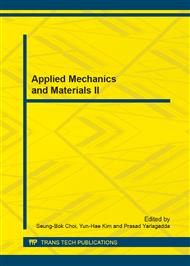p.246
p.254
p.259
p.265
p.271
p.277
p.281
p.285
p.295
Numerical Simulation of Magnetostriction-Induced Cavitation Flow
Abstract:
The magnetostriction-induced cavitation flow was numerically simulated by using a full cavitation model with the SST k-ω turbulence model and the dynamic mesh technique. The characteristics of ultrasonic cavitation flow and the cavitation erosion mechanism were revealed. The computational results show that the pressure fluctuation possesses the characteristics of pulse on the specimen. Intense pressure pluses and cavitation occur in the local flow adjacent to the specimen. As numerous bubbles collapse, intense pressure pulses form on the specimen. Cavitation intensity is serious at the center while it is slight at the edge. The pressure pulse and the vapor volumn fraction with the equal magnitude symmetrically distribute around the center, meaning that cavitatin erosion appears a symmetrical pattern around the center. The effective pressure fluctuation occurs in the local flow field within the distance of one third of the wave length to the specimen. It is validated that the wave energy dissipates very fast in the magnetostriction-induced cavitation flow.
Info:
Periodical:
Pages:
271-276
Citation:
Online since:
December 2013
Authors:
Price:
Сopyright:
© 2014 Trans Tech Publications Ltd. All Rights Reserved
Share:
Citation:


